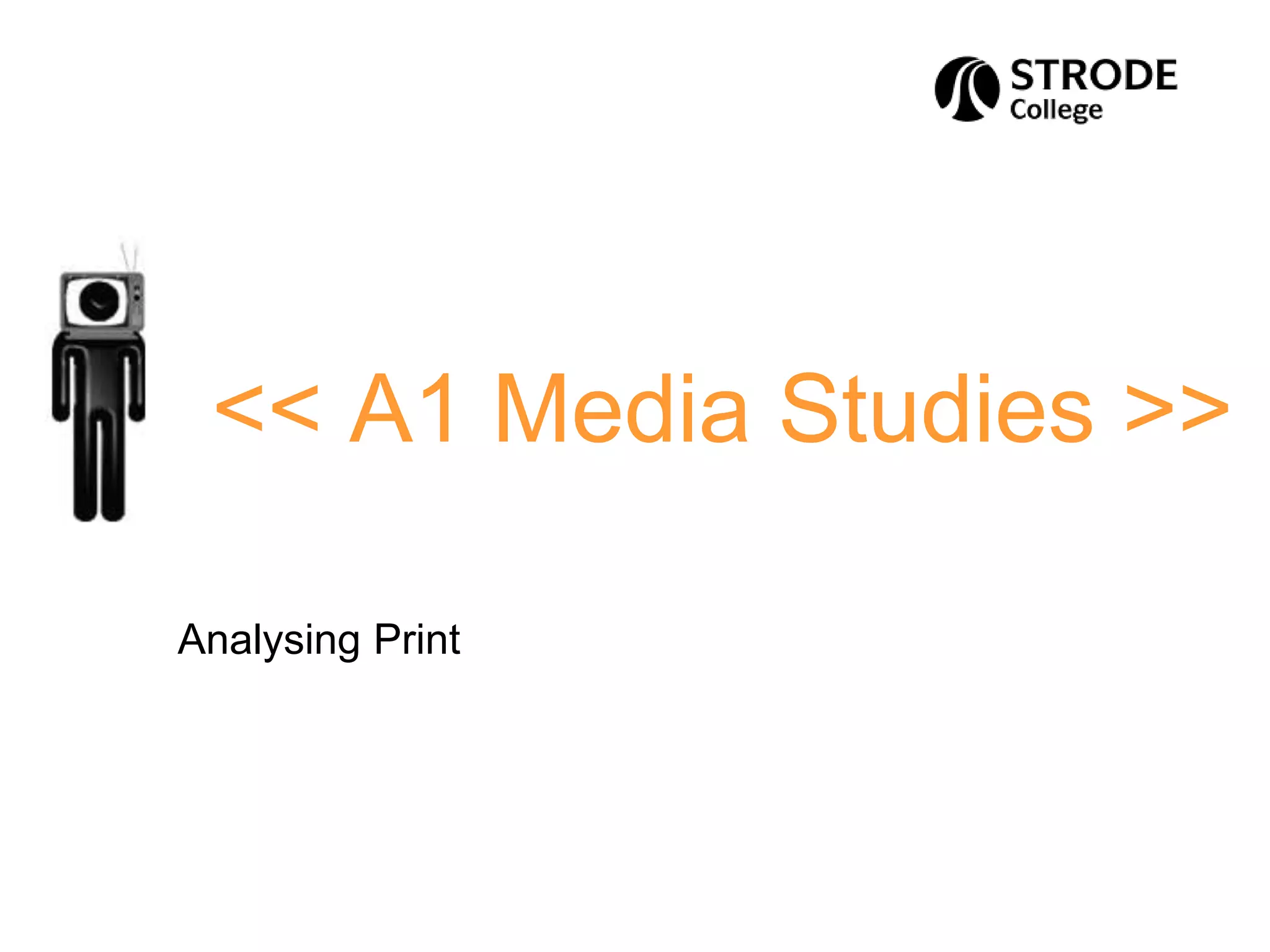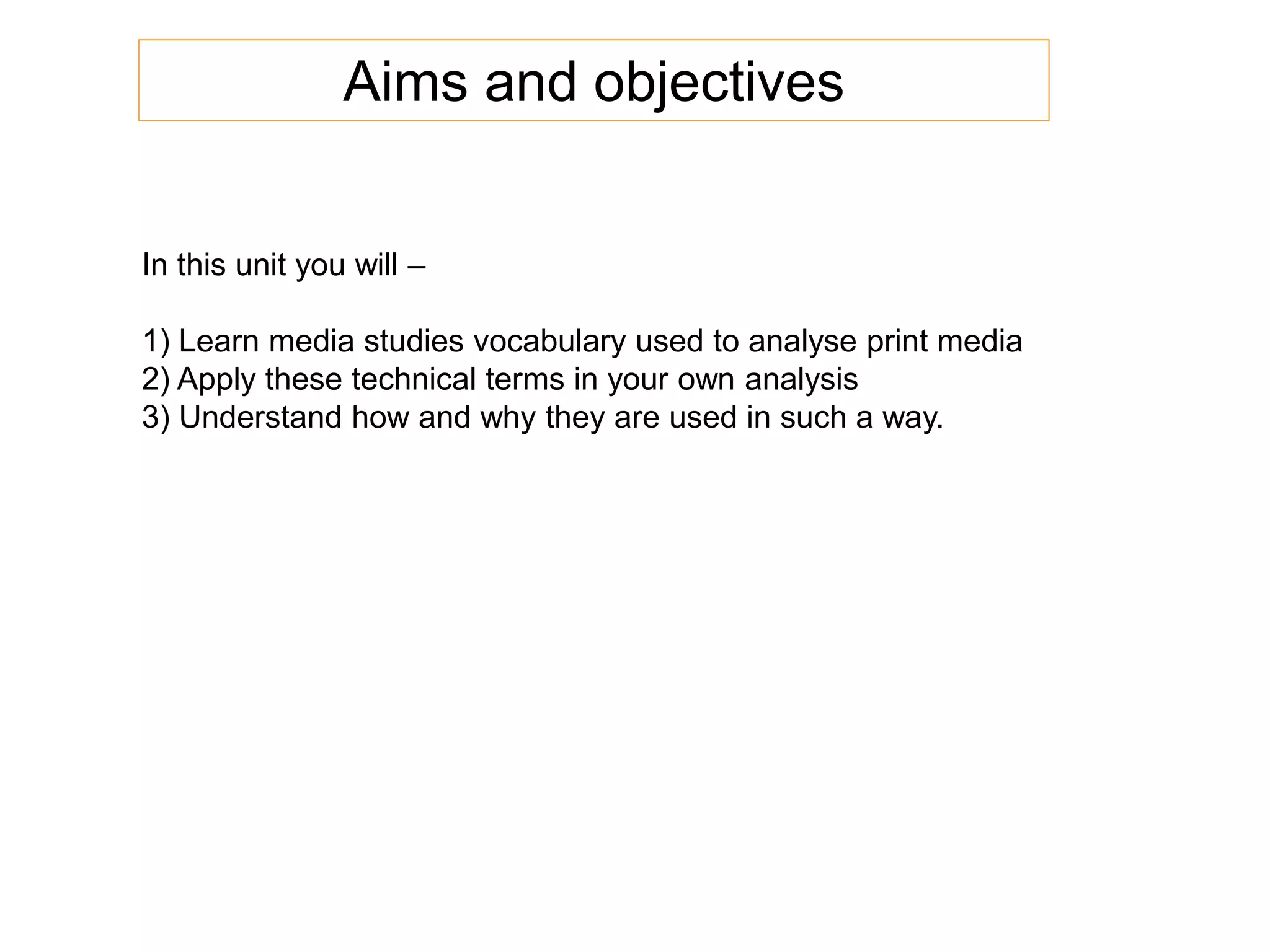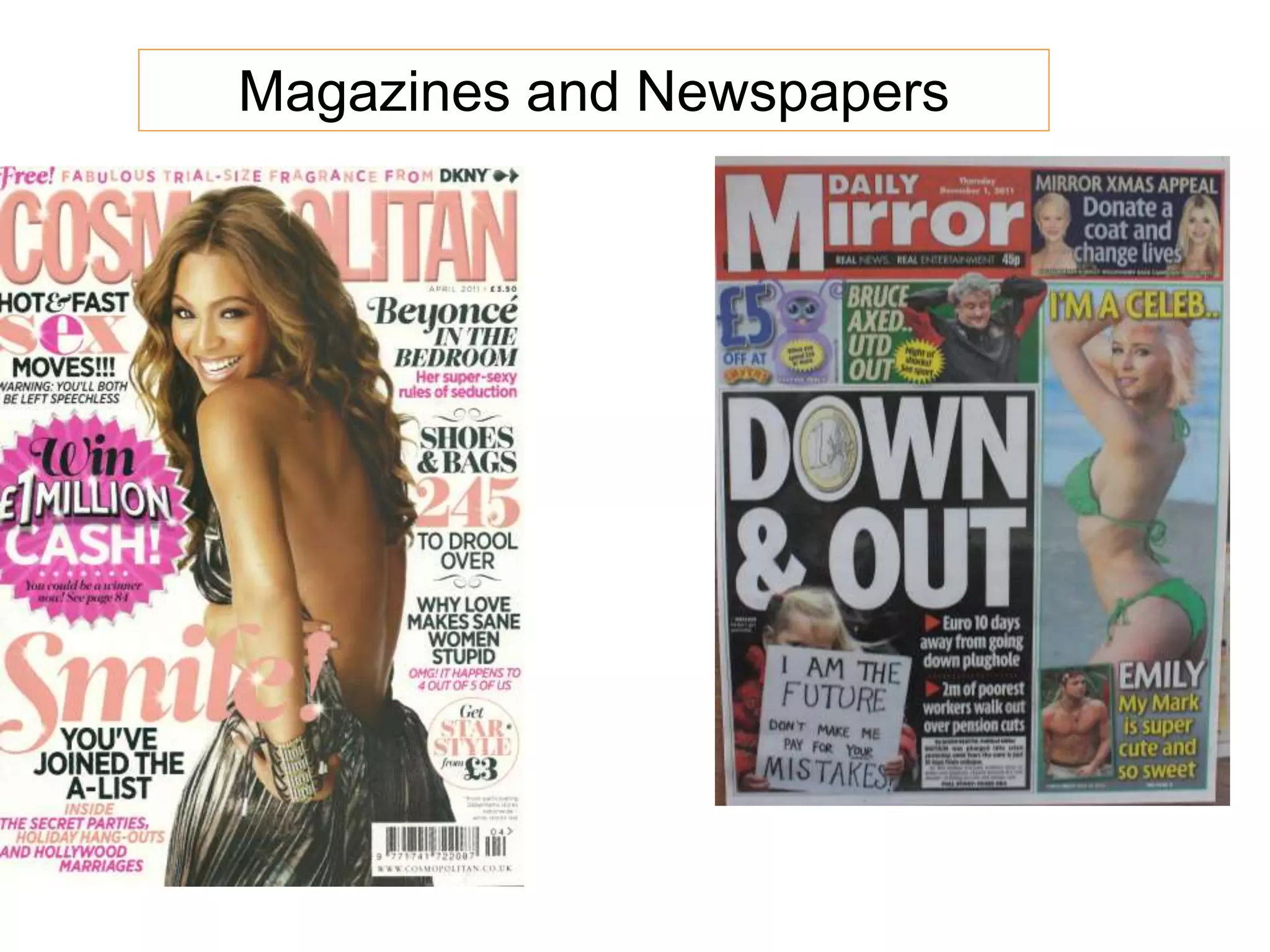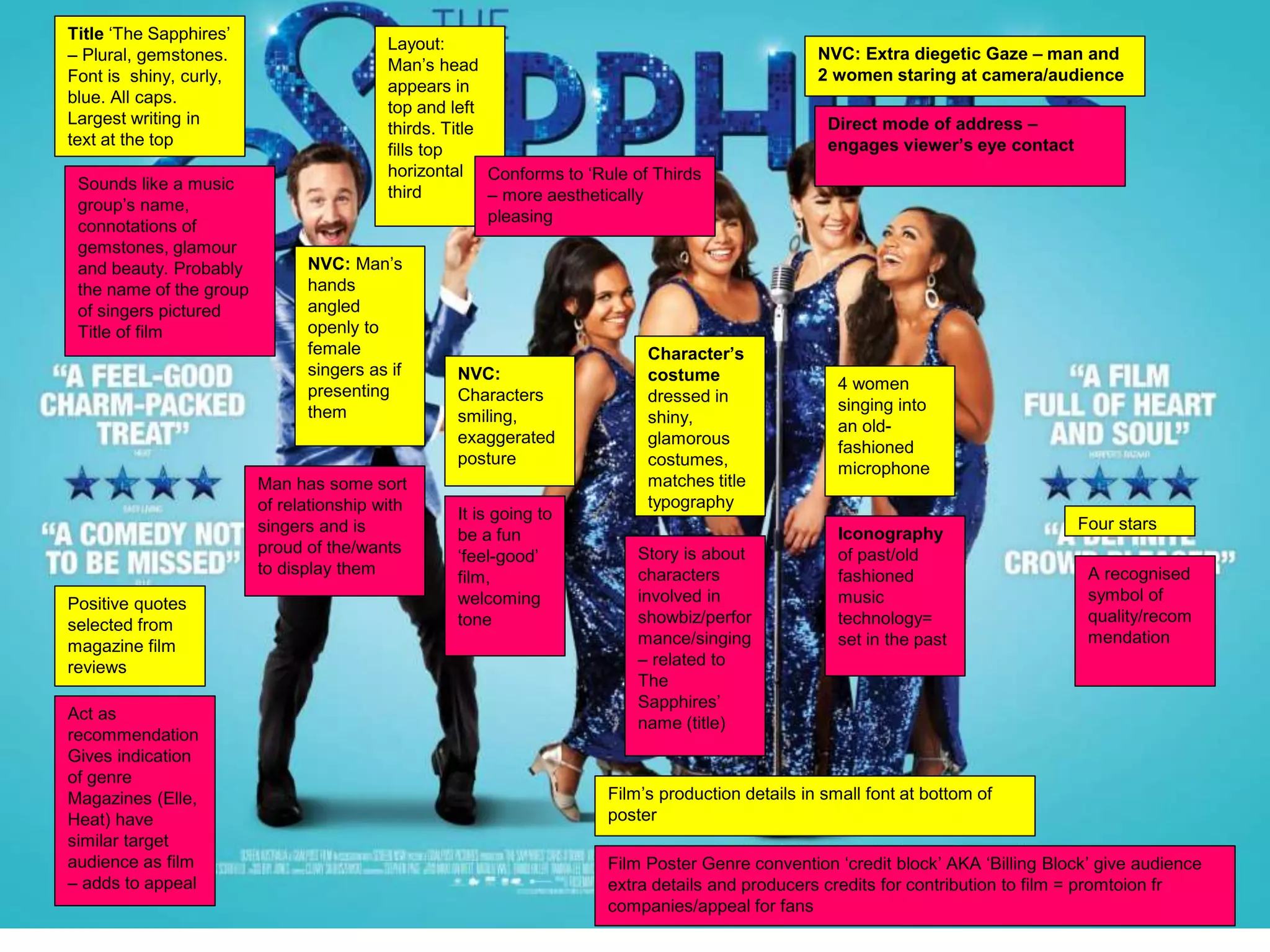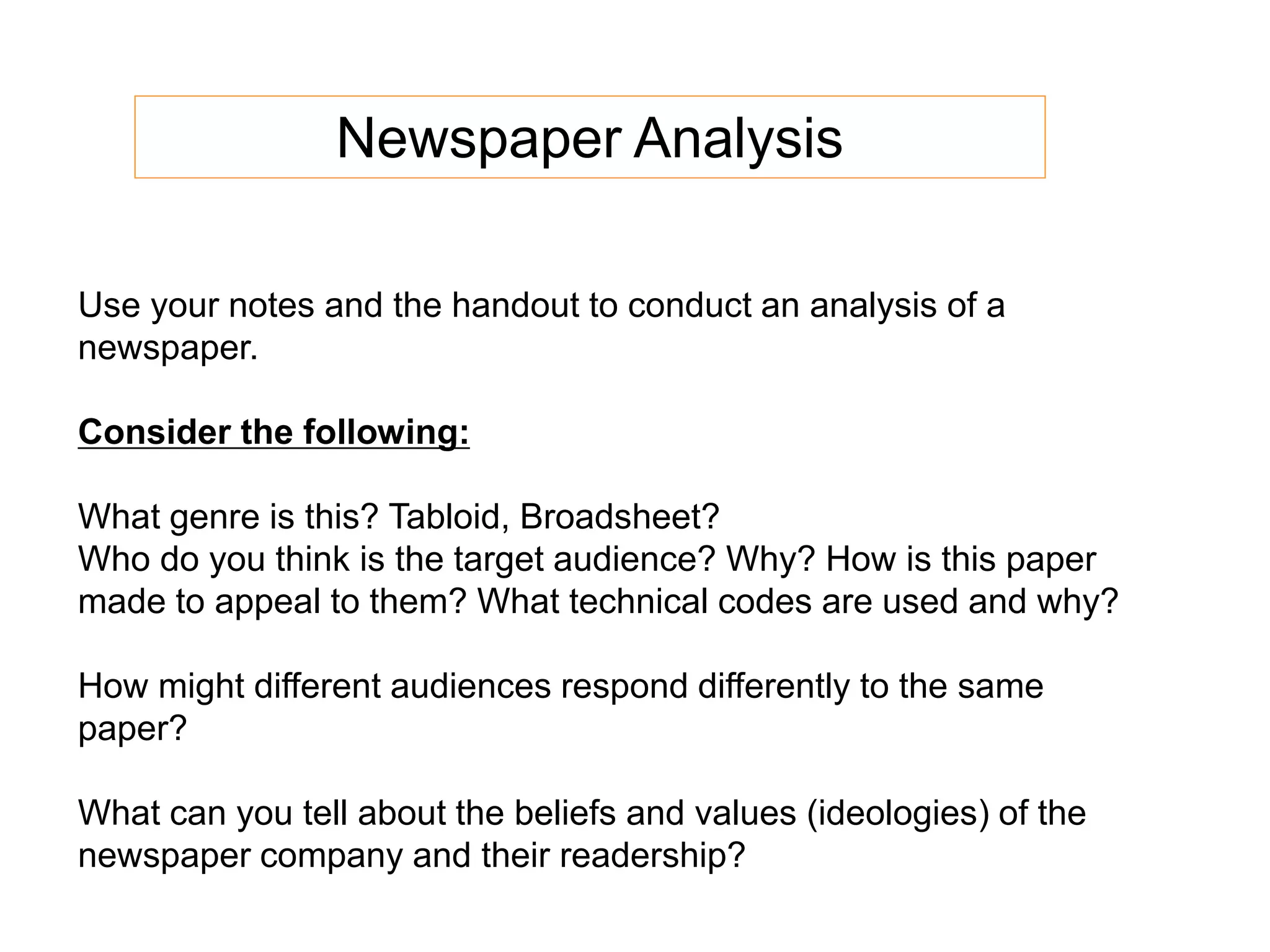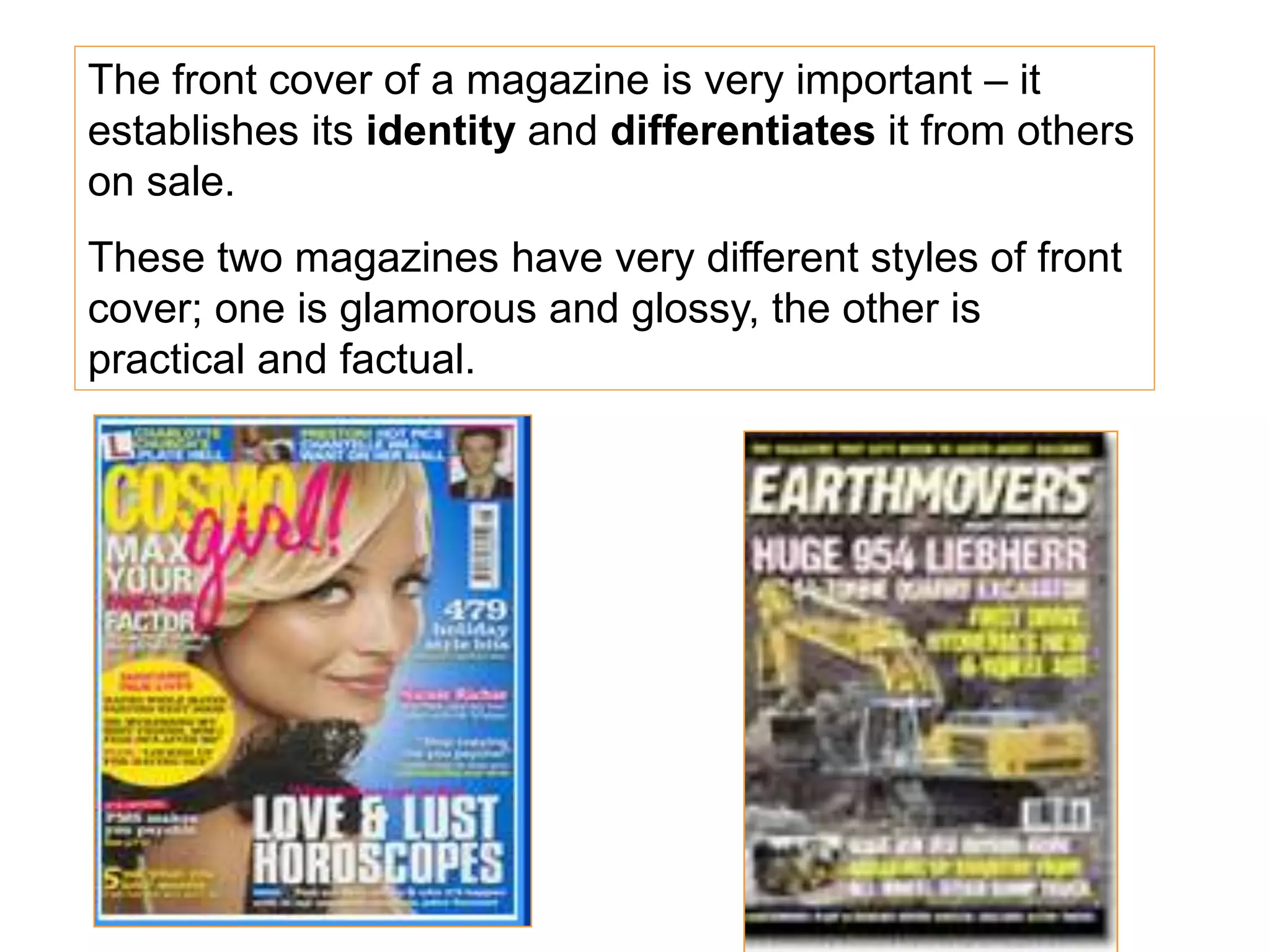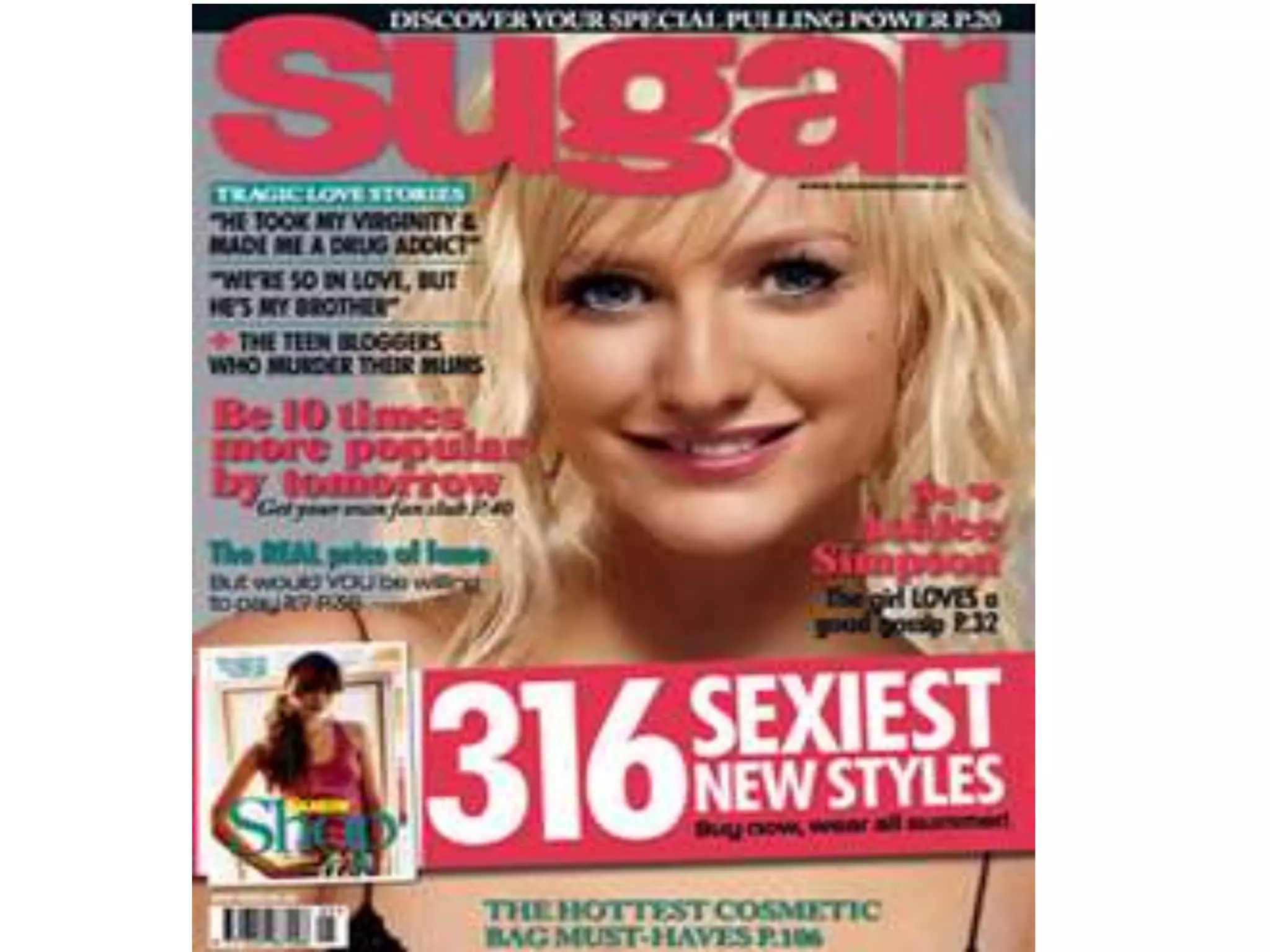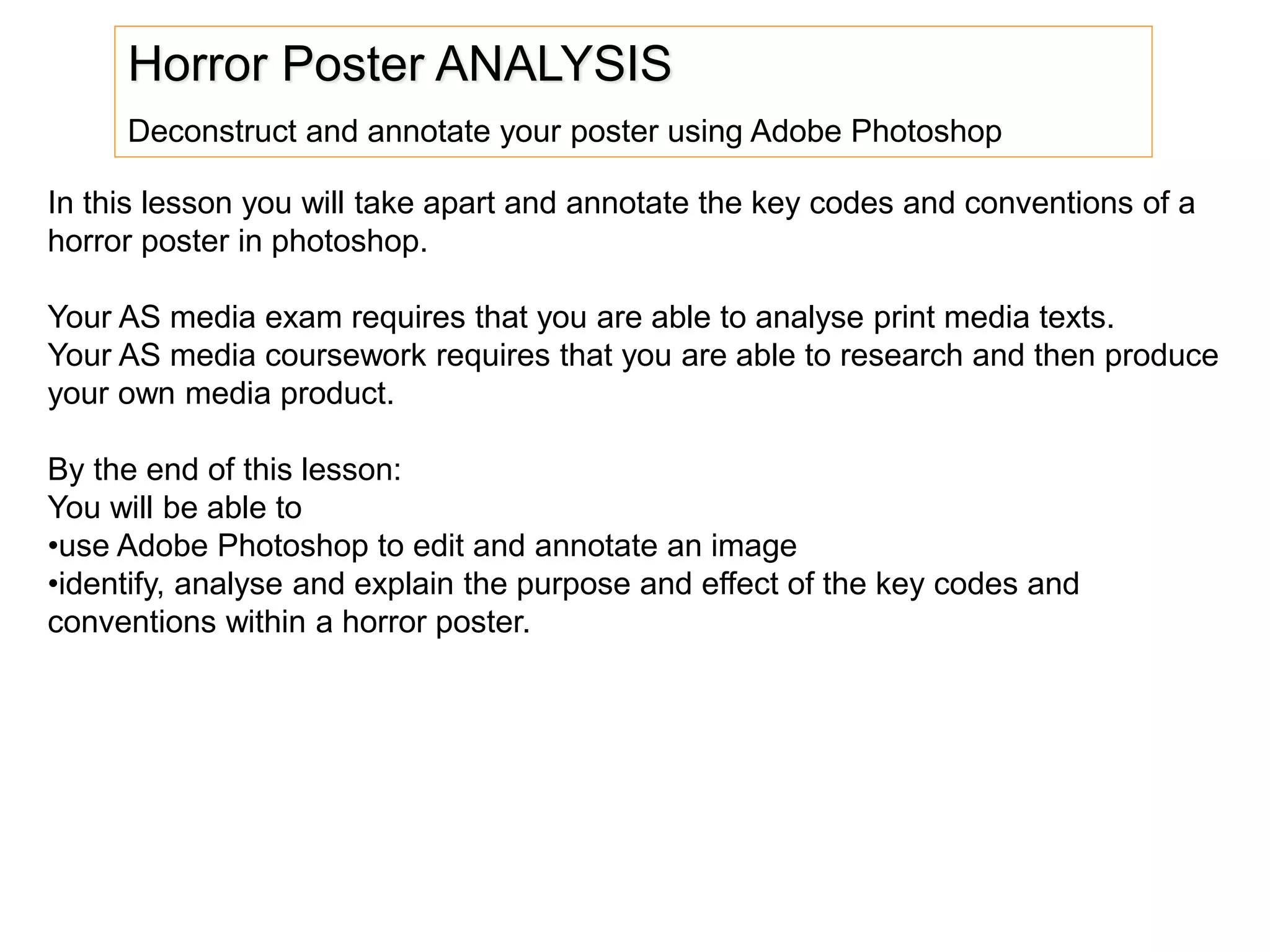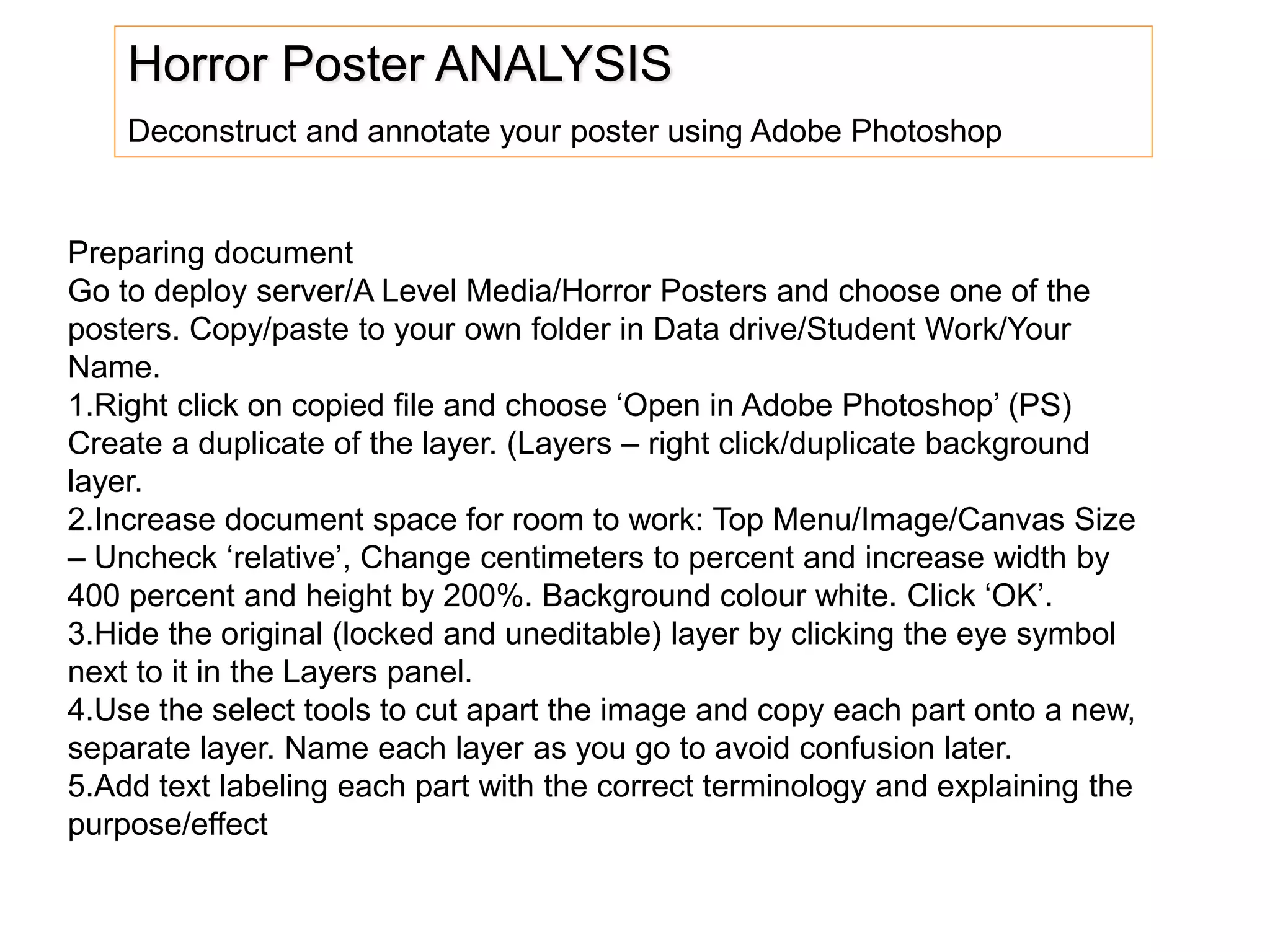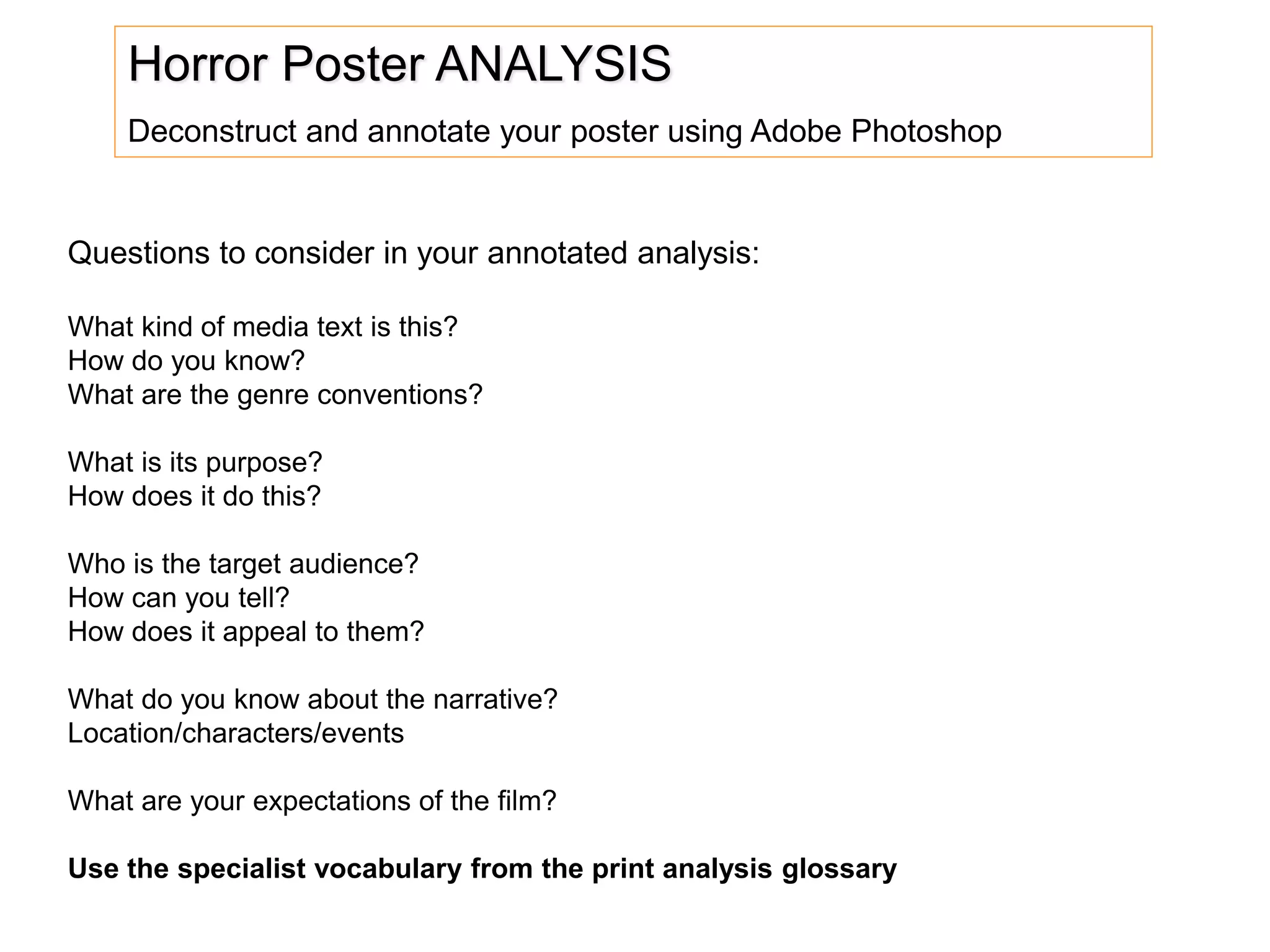This document provides an overview of print media analysis for media studies. It defines key terms like denotation and connotation and discusses analyzing various elements of print texts like visual codes, layout, language, and mode of address. The document also includes examples of analyzing film posters and magazine covers using appropriate media terminology to identify intended meanings and effects.
